


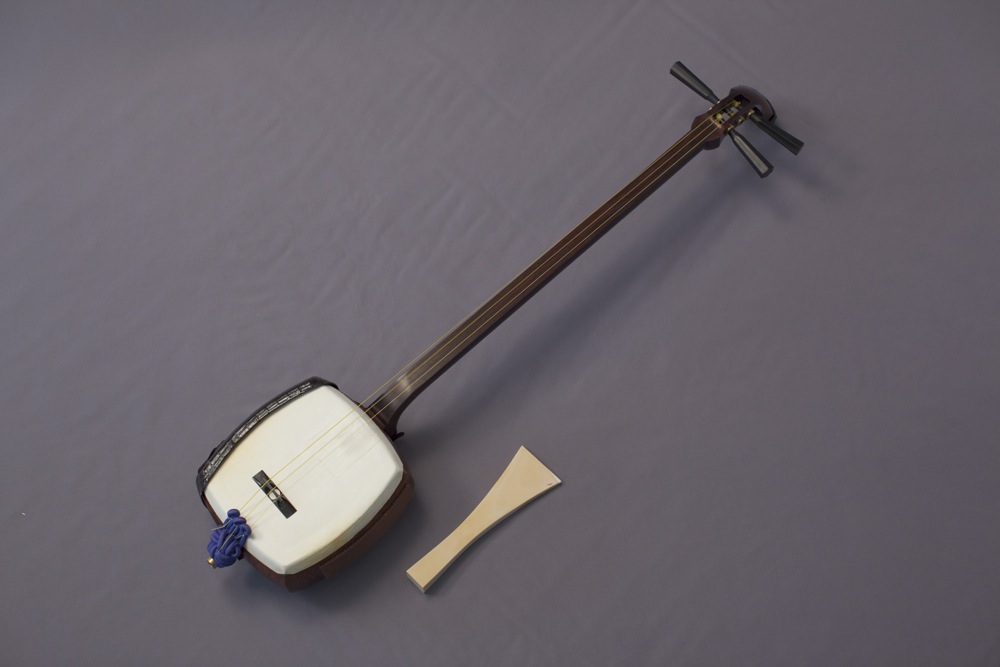
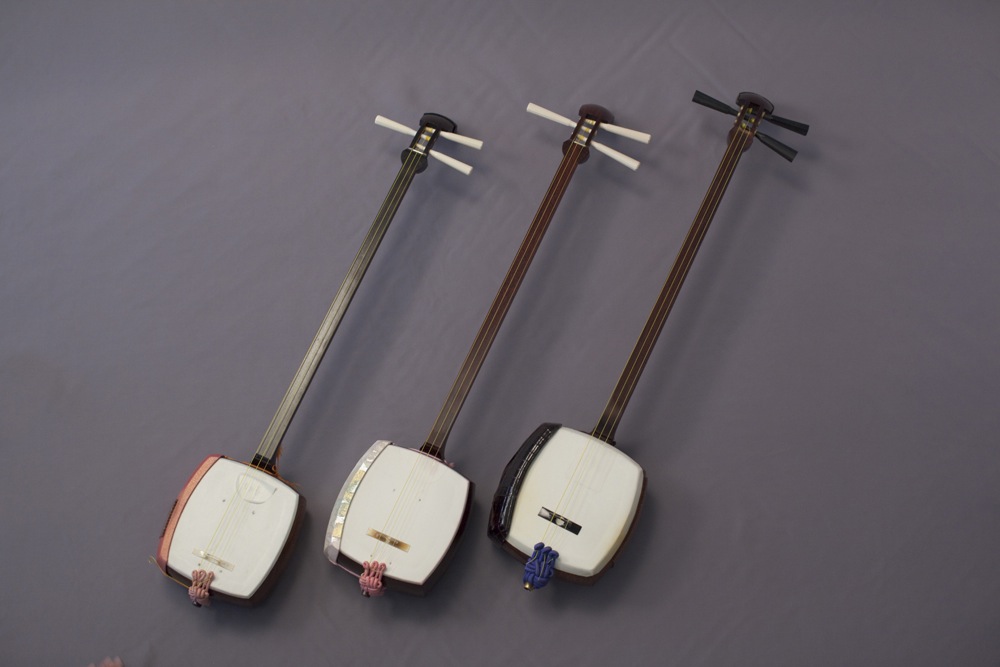
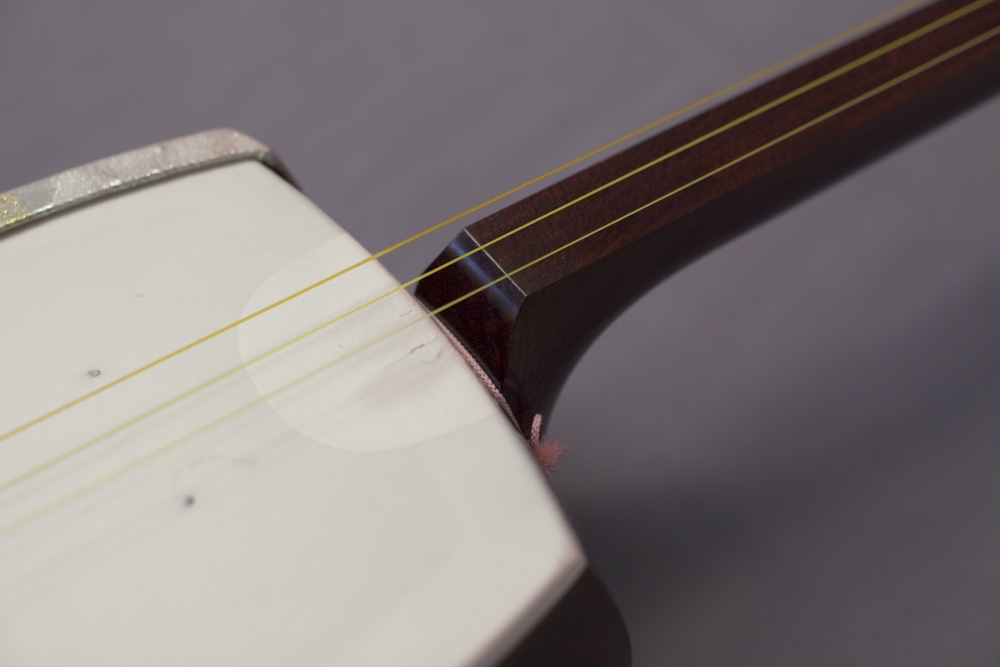
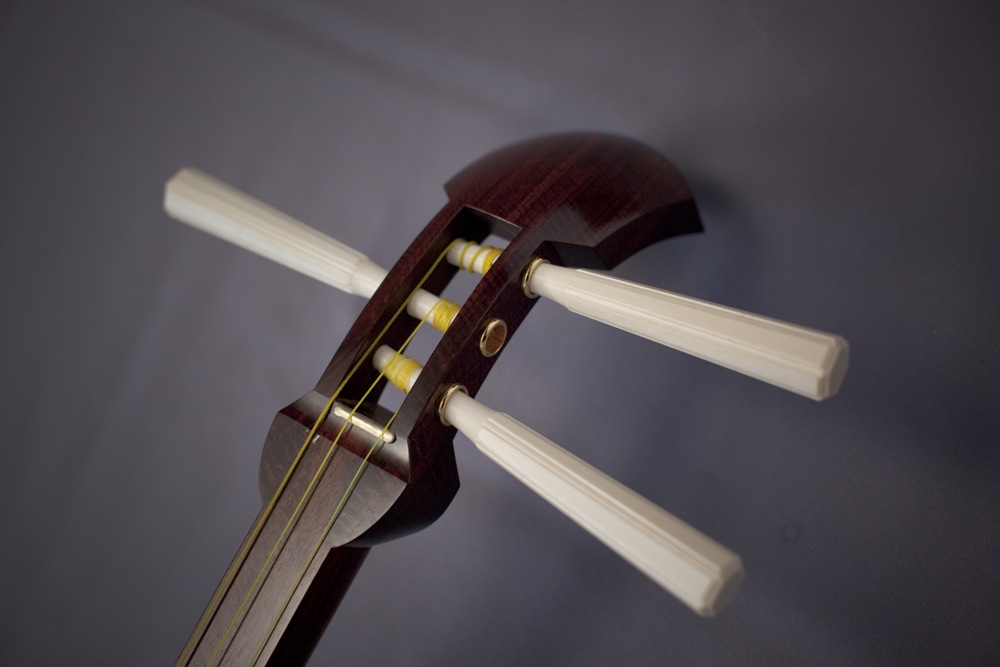
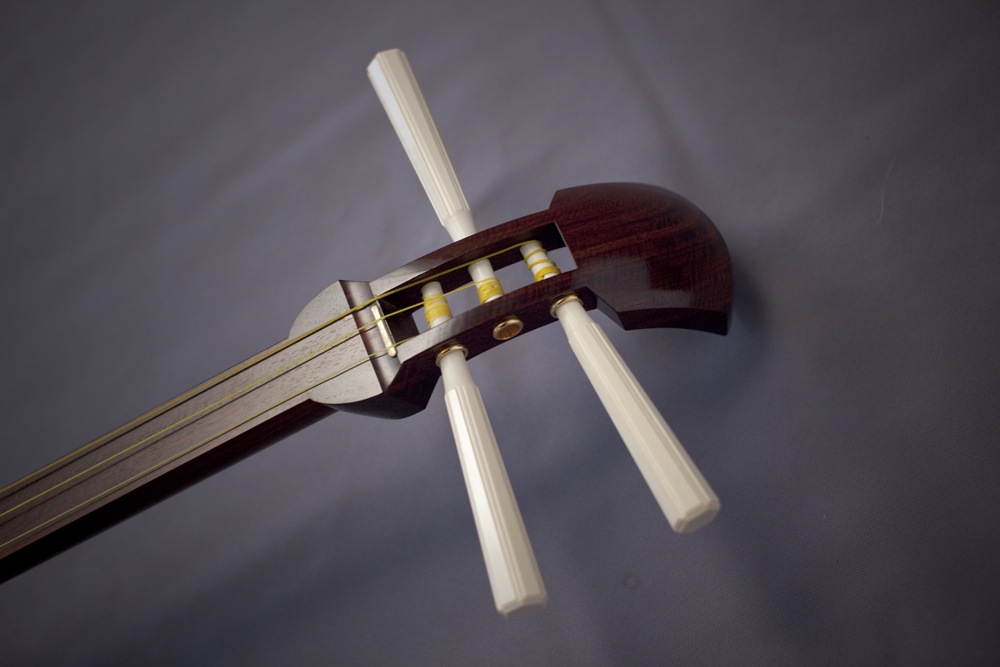
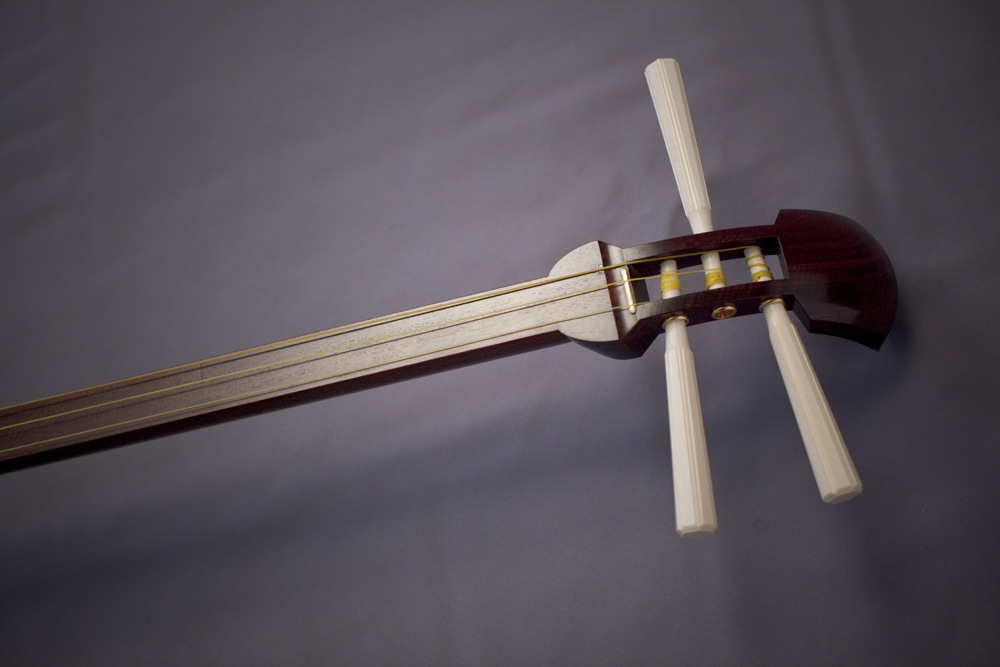
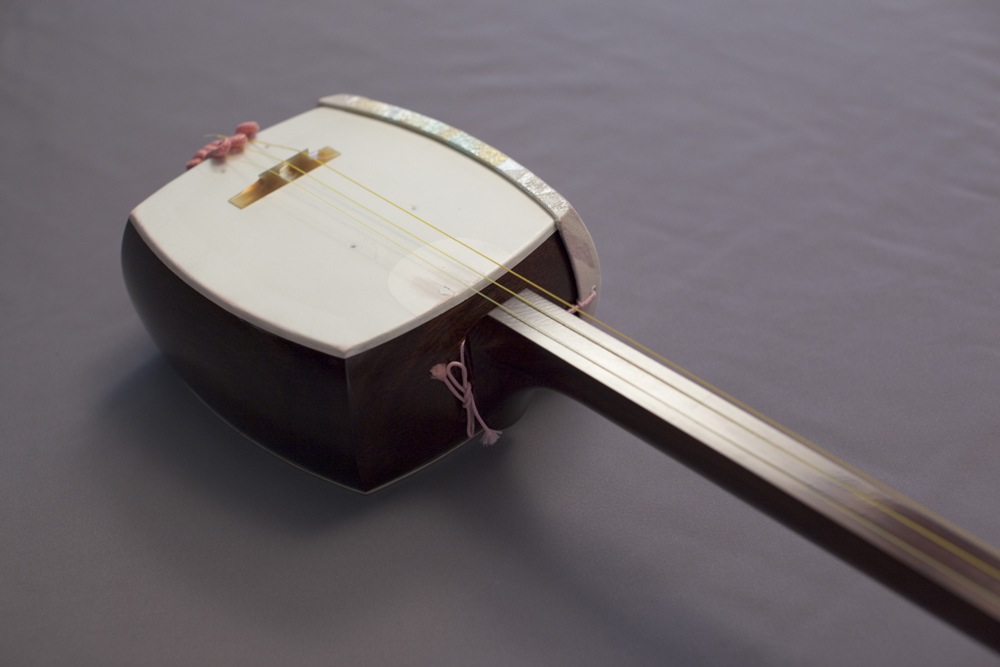


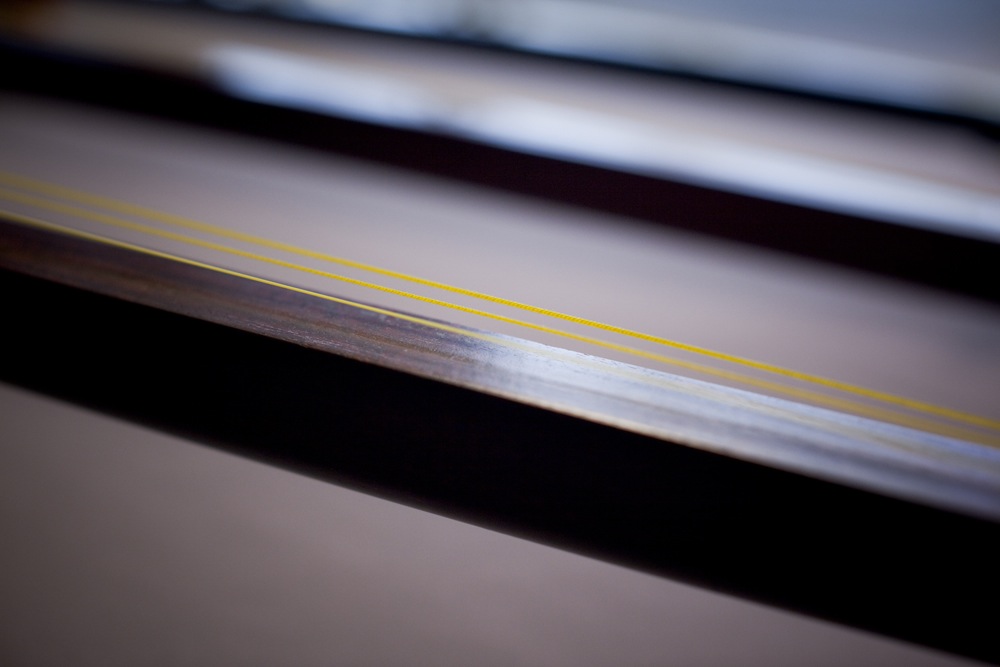

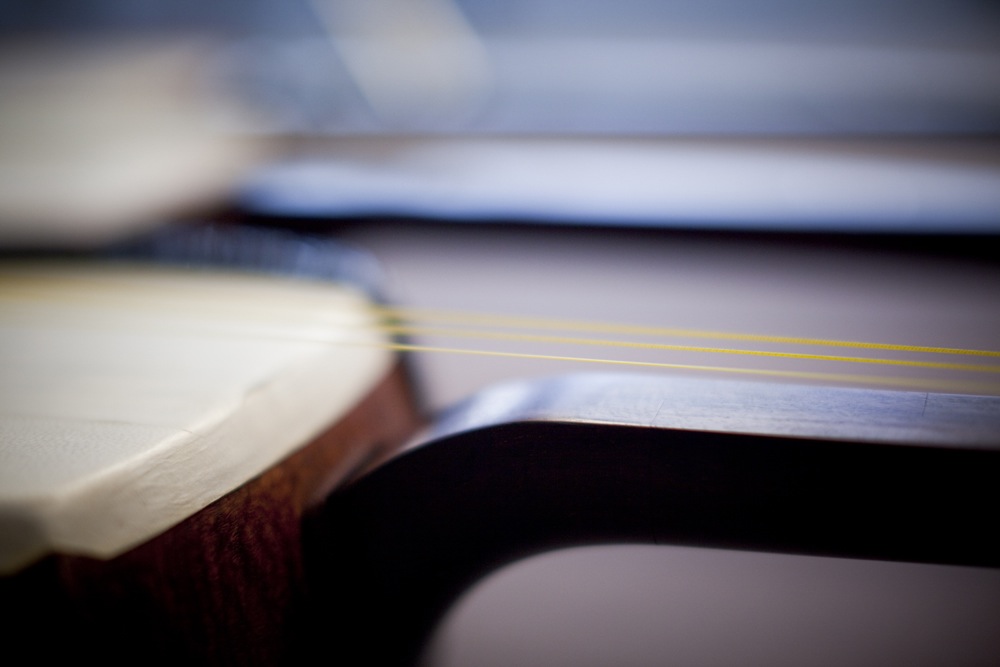















The Chinese sanxian came through Okinawa as the sanshin and then entered Japan, where it can also be called the sangen.
As the name suggests, it has three strings; in China and Okinawa, snakeskin is used, but in mainland Japan cat or dog skin is used.
It was only since the early modern period that it was used in Japan, but it has been widely loved for a wide range of purposes, from theater music such as kabuki and puppet theater, to accompaniment for chamber songs, as well as folk songs from various regions.
Depending on the genre, various sizes form thin-necked to thick-necked are considered standard, and there are variations in the shape of the plectrum and bridge as well. When plucking the strings, the plectrum is struck against the skin of the drumhead, and the strings lightly touch the surface of the neck, creating a lingering sound called sawari.
There are also many different tuning methods, including the standard honchoshi (a combination of a perfect fourth and a perfect fifth from the bottom), ni-agari in which the second string is raised by one tone, and san-sagari in which the third string is lowered by one tone.
The reference tone can be freely set to suit the singer or other instruments, but is usually between B and D, and when written in staff notation, the fundamental tone is often written as B regardless of the actual pitch.







Performance and Explanation by Kimura Yoko and Nozawa Tetsuya
※ When musical notation is used in each episode, it is written in absolute pitch.
Nakanoshima Kin'ichi (1904-1984), composed in 1941
Banshiki is a note name used in the gagaku genre, and corresponds to the English note B. The composer was a performer and composer of koto music in the Yamada School. He was also known as a master of the shamisen.
Kitazawa Kōtō, Fukakusa Kengyō, date of composition unknown
This piece was developed by Fukakusa Kengyō (early 1700s) from the original by Kitazawa Kōtō (late 1600s). It expresses the practice of bleaching cloth in the Uji River in Kyoto. The ainote (instrumental interlude) is famous, and has been borrowed for a piece in the nagauta genre called Echigo-jishi, as well as for other pieces.
Nakanoshima Kengyō I (1838-1894), Yamaki Kengyō III (1835/37-1871/73), date of composition unknown
The shamisen part was composed by Nakanoshima Kengyō I, and the koto part was composed by Yamaki Kengyō III. The interlude uses a distinctive musical pattern called kinuta-no-te. Nakanoshima Kin'ichi is the composer's grandson.
Satō Yōko, composed in 2007
The frequent use of rhythmic motifs such as 6/8, 3/4, and 9/16 represents The Road, i.e. the flow of time and the path to which we can always return. This shamisen solo expresses the energetic and positive steps one takes in life, even if things don't go as planned. Commissioned and premiered by Tetsuya Nozawa.